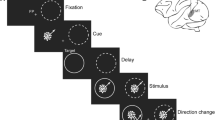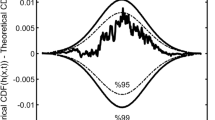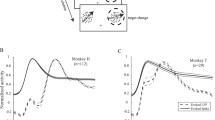Abstract
For a neuron, firing activity can be in synchrony with that of others, which results in spatial correlation; on the other hand, spike events within each individual spike train may also correlate with each other, which results in temporal correlation. In order to investigate the relationship between these two phenomena, population neurons’ activities of frog retinal ganglion cells in response to binary pseudo-random checker-board flickering were recorded via a multi-electrode recording system. The spatial correlation index (SCI) and temporal correlation index (TCI) were calculated for the investigated neurons. Statistical results showed that, for a single neuron, the SCI and TCI values were highly related—a neuron with a high SCI value generally had a high TCI value, and these two indices were both associated with burst activities in spike train of the investigated neuron. These results may suggest that spatial and temporal correlations of single neuron’s spiking activities could be mutually modulated; and that burst activities could play a role in the modulation. We also applied models to test the contribution of spatial and temporal correlations for visual information processing. We show that a model considering spatial and temporal correlations could predict spikes more accurately than a model does not include any correlation.







Similar content being viewed by others
Abbreviations
- ISI:
-
inter-spike-intervals
- RGC:
-
retinal ganglion cell
- MEA:
-
multi-electrode array
- SCI:
-
spatial correlation index
- STA:
-
Spike-triggered averaged
- TCI:
-
temporal correlation index
- LGN:
-
lateral geniculate nucleus
References
Bhattacharya, J., Edwards, J., Mamelak, A. N., & Schuman, E. M. (2005). Long-range temporal correlations in the spontaneous spiking of neurons in the hippocampal-amygdala complex of humans. Neuroscience, 131(2), 547–555.
Bloomfield, S. A., & Völgyi, B. (2009). The diverse functional roles and regulation of neuronal gap junctions in the retina. Nature Reviews. Neuroscience, 10(7), 495–506.
Brivanlou, I. H., Warland, D. K., & Meister, M. (1998). Mechanisms of concerted firing among retinal ganglion cells. Neuron, 20(3), 527–540.
Buonomano, D. V., & Maass, W. (2009). State-dependent computations: spatiotemporal processing in cortical networks. Nature Reviews. Neuroscience, 10(2), 113–125.
Cai, C. F., Zhang, Y. Y., Liu, X., Liang, P. J., & Zhang, P. M. (2008). Detecting determinism in firing activities of retinal ganglion cells during response to complex stimuli. Chinese Physics Letters, 25(5), 1595–1598.
DeVries, S. H. (1999). Correlated firing in rabbit retinal ganglion cells. Journal of Neurophysiology, 81(2), 908–920.
Devries, S. H., & Baylor, D. A. (1997). Mosaic arrangement of ganglion cell receptive fields in rabbit retina. Journal of Neurophysiology, 78(4), 2048–2060.
Field, G. D., & Chichilnisky, E. J. (2007). Information processing in the primate retina: circuitry and coding. Annual Review of Neuroscience, 30, 1–30.
Hosoya, T., Baccus, S. A., & Meister, M. (2005). Dynamic predictive coding by the retina. Nature, 436(7047), 71–77.
Ishikane, H., Gangi, M., Honda, S., & Tachibana, M. (2005). Synchronized retinal oscillations encode essential information for escape behavior in frogs. Nature Neuroscience, 8(8), 1087–1095.
Jing, W., Liu, W. Z., Gong, X. W., Gong, H. Q., & Liang, P. J. (2010a). Influence of GABAergic inhibition on concerted activity between the ganglion cells. NeuroReport, 21(12), 797–801.
Jing, W., Liu, W. Z., Gong, X. W., Gong, H. Q., & Liang, P. J. (2010b). Visual pattern recognition based on spatio-temporal patterns of retinal ganglion cells’ activities. Cognitive Neurodynamics, 4, 179–188.
Koch, K., McLean, J., Berry, M., Sterling, P., Balasubramanian, V., & Freed, M. A. (2004). Efficiency of information transmission by retinal ganglion cells. Current Biology, 14(17), 1523–1530.
Koch, K., McLean, J., Segev, R., Freed, M. A., Berry, M. J., Balasubramanian, V., et al. (2006). How much the eye tells the brain. Current Biology, 16(14), 1428–1434.
Lesica, N., & Stanley, G. (2004). Encoding of natural scene movies by tonic and burst spikes in the lateral geniculate nucleus. The Journal of Neuroscience, 24(47), 10731.
Lettvin, J., Maturana, H., McCulloch, W., & Pitts, W. (1959). What the frog’s eye tells the frog’s brain. Proceedings of the IRE, 47(11), 1940–1951.
Lisman, J. E. (1997). Bursts as a unit of neural information: making unreliable synapses reliable. Trends in Neurosciences, 20(1), 38–43.
Liu, X., Zhou, Y., Gong, H. Q., & Liang, P. J. (2007). Contribution of the GABAergic pathway (s) to the correlated activities of chicken retinal ganglion cells. Brain Research, 1177, 37–46.
Lowen, S. B., & Teich, M. C. (1992). Auditory-nerve action potentials form a nonrenewal point process over short as well as long time scales. Journal of the Acoustical Society of America, 92(2I), 803–806.
Meister, M., Pine, J., & Baylor, D. A. (1994). Multi-neuronal signals from the retina: acquisition and analysis. Journal of Neuroscience Methods, 51(1), 95–106.
Meister, M., Lagnado, L., & Baylor, D. A. (1995). Concerted signaling by retinal ganglion cells. Science, 270(5239), 1207.
Neuenschwander, S., & Singer, W. (1996). Long-range synchronization of oscillatory light responses in the cat retina and lateral geniculate nucleus. Nature, 379(6567), 728–733.
Oram, M., Wiener, M., Lestienne, R., & Richmond, B. (1999). Stochastic nature of precisely timed spike patterns in visual system neuronal responses. Journal of Neurophysiology, 81(6), 3021–3033.
Pillow, J. W., Shlens, J., Paninski, L., Sher, A., Litke, A. M., Chichilnisky, E. J., et al. (2008). Spatio-temporal correlations and visual signalling in a complete neuronal population. Nature, 454(7207), 995–999.
Reid, R., Victor, J., & Shapley, R. (1997). The use of m-sequences in the analysis of visual neurons: linear receptive field properties. Visual Neuroscience, 14(06), 1015–1027.
Reinagel, P., & Reid, R. C. (2000). Temporal coding of visual information in the thalamus. The Journal of Neuroscience, 20(14), 5392.
Schneidman, E., Berry, M. J., II, Segev, R., & Bialek, W. (2006). Weak pairwise correlations imply strongly correlated network states in a neural population. Nature, 440(7087), 1007.
Schnitzer, M. J., & Meister, M. (2003). Multineuronal firing patterns in the signal from eye to brain. Neuron, 37(3), 499–511.
Segev, R., Goodhouse, J., Puchalla, J., & Berry Ii, M. J. (2004). Recording spikes from a large fraction of the ganglion cells in a retinal patch. Nature Neuroscience, 7(10), 1154–1161.
Shlens, J., Rieke, F., & Chichilnisky, E. J. (2008). Synchronized firing in the retina. Current Opinion in Neurobiology, 18(4), 396–402.
Snider, R., Kabara, J., Roig, B., & Bonds, A. (1998). Burst firing and modulation of functional connectivity in cat striate cortex. Journal of Neurophysiology, 80(2), 730–744.
Strong, S., Koberle, R., van Steveninck, R., & Bialek, W. (1998). Entropy and information in neural spike trains. Am Phys Soc, 80, 197–200.
Teich, M. C., Turcott, R. G., & Siegel, R. M. (1996). Temporal correlation in cat striate-cortex neural spike trains. IEEE Engineering in Medicine and Biology Magazine, 15(5), 79–87.
Teich, M. C., Heneghan, C., Lowen, S. B., Ozaki, T., & Kaplan, E. (1997). Fractal character of the neural spike train in the visual system of the cat. Journal of the Optical Society of America A, 14(3), 529–546.
Usrey, W. M., Reppas, J. B., & Reid, R. C. (1998). Paired-spike interactions and synaptic efficacy of retinal inputs to the thalamus. Nature, 395(6700), 384–387.
Zhang, P. M., Wu, J. Y., Zhou, Y., Liang, P. J., & Yuan, J. (2004). Spike sorting based on automatic template reconstruction with a partial solution to the overlapping problem. Journal of Neuroscience Methods, 135(1–2), 55–65.
Acknowledgements
The authors would like to thank Mr. Xin-Wei Gong for helpful discussions. This work was supported by the grants from the State Key Basic Research and Development Plan (No.2005CB724301) and National Foundation of Natural Science of China (No.30670519).
Author information
Authors and Affiliations
Corresponding author
Additional information
Action Editor: Simon R Schultz
Rights and permissions
About this article
Cite this article
Liu, WZ., Jing, W., Li, H. et al. Spatial and temporal correlations of spike trains in frog retinal ganglion cells. J Comput Neurosci 30, 543–553 (2011). https://doi.org/10.1007/s10827-010-0277-9
Received:
Revised:
Accepted:
Published:
Issue Date:
DOI: https://doi.org/10.1007/s10827-010-0277-9




